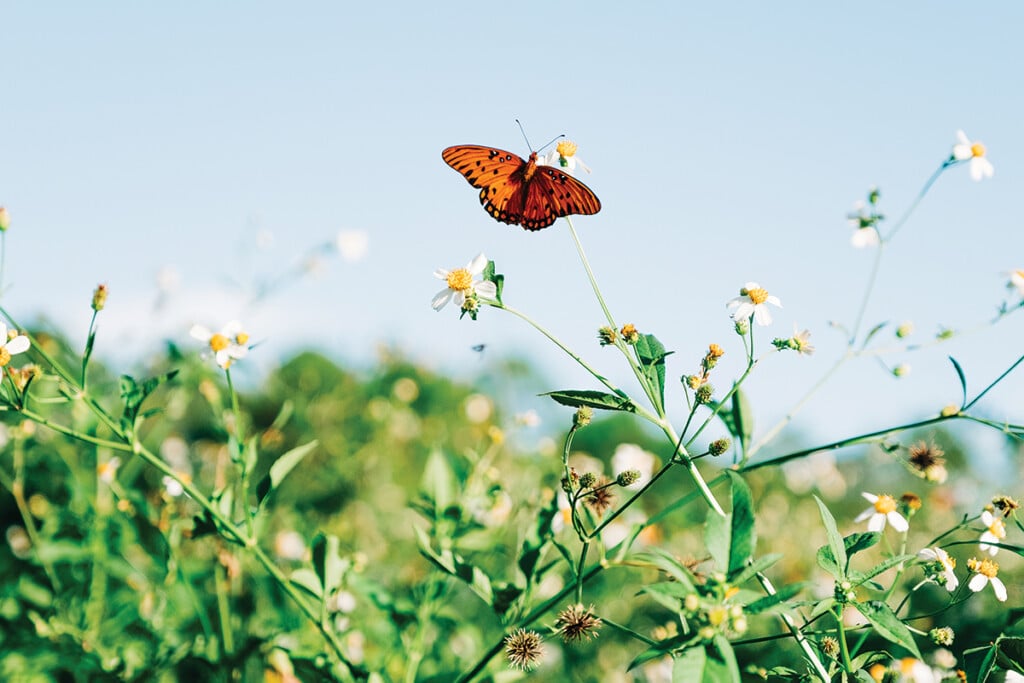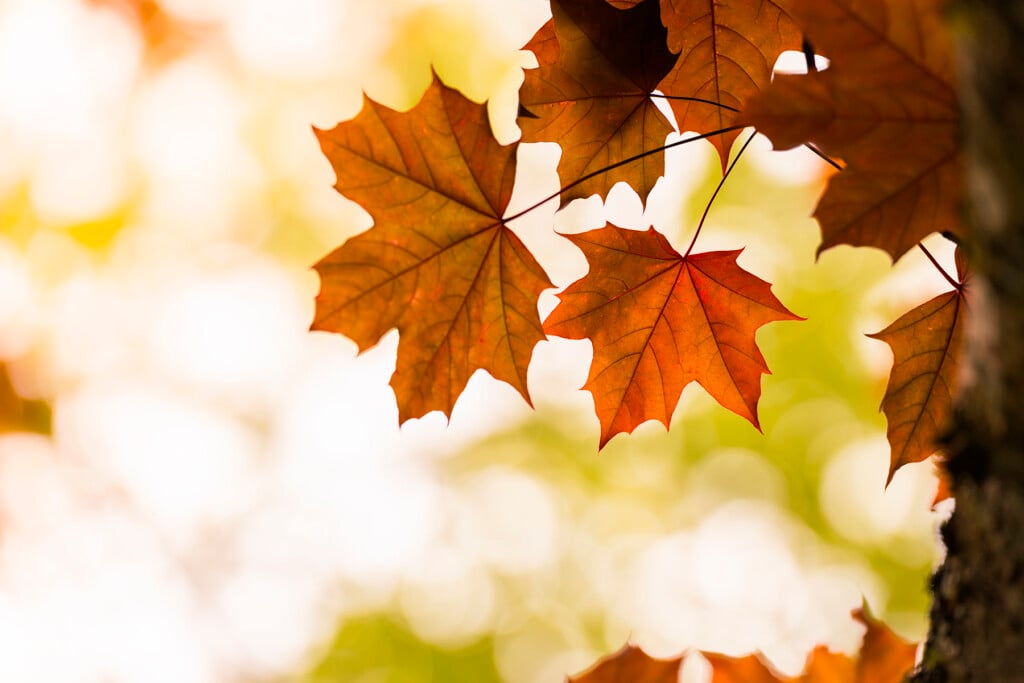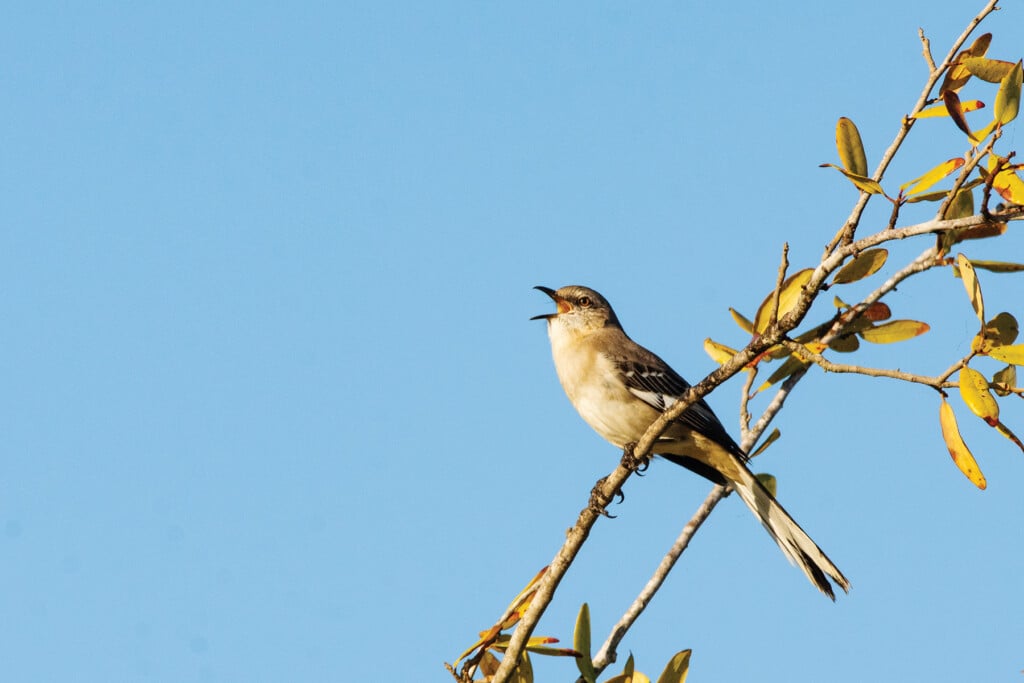The Butterfly Effect
Butterfly gardening offers many benefits

When I was younger, I raised a handful of painted lady butterflies for a school science project. I couldn’t tell you why or what the purpose of my experiment was. All I can say is that they were beautiful and fun to care for. To this day, I have an affinity for these delicate creatures.
I’m not alone in my interest in butterflies, of course. For centuries, their beauty and transformative nature have captured the imaginations of religious leaders, artists and everyday people. Many cultures have mythologized them as symbols of freedom, hope and new beginnings. Some believe they contain the souls of departed loved ones, others think they bring good luck.
Thanks to scientific research, we know one thing about butterflies to be true — they’re essential to Earth’s ecosystem. Sadly, research also shows a decline in some butterfly populations. Monarchs, specifically, are vulnerable and face a reduction in breeding habitat due to several factors, including but not limited to herbicide application and land use changes, per the World Wildlife Foundation.
To help boost and maintain local butterfly populations, some experts recommend butterfly gardening.
Creating a Butterfly Garden

Butterflies such as the monarch will flock to flowering zinnias. Plant them near, between or bordering your vegetable garden to encourage pollinators. Photo by iStock / Getty Images Plus: Susan Lavender
Dean and Sally Jue, retired scientists from Florida State University, are the founding members and past presidents of the local Hairstreak Chapter of the North American Butterfly Association (NABA). According to the expert duo, butterfly gardening has many benefits beyond helping sustain the natural environment. It can inspire your children to “better appreciate the wonders of nature,” provide personal enjoyment and reduce the time and maintenance costs required to keep a “perfectly manicured garden.”
To establish a flourishing butterfly garden, you’ll need the right plants. Dean and Sally Jue recommend using native plants because they’re “adapted to the local Florida environment and evolved with the butterflies.”

Dean Jue. Photo courtesy of Dean and Sally Jue
“Host plants necessary for butterfly reproduction are specific for each butterfly species,” explained Dean and Sally Jue. “Some local butterflies, including swallowtails and emperors, use trees or shrubs as their larval food plants … the Gulf fritillary and the zebra heliconian use passionflowers as their host plants. And monarchs, of course, use milkweeds.”
While butterflies are particular about their host plants, they’re less picky about where they source their nectar — they’ll visit all kinds of flowers to obtain it. Popular native nectar plants include blazing stars and Spanish needles.
As the seasons progress and your garden becomes unruly, you may find it tempting to clean things up. But Dean and Sally Jue said it’s best to leave a portion of your garden unmanicured.

Sally Jue. Photo courtesy of Dean and Sally Jue
“If you do a heavy pruning of your vegetation, you may remove the next generation of butterflies in the larval or pupal stages of their life cycles,” they advised. “Leaving a natural, messy area of leaves, unpruned bushes and branches in or near your butterfly garden will result in more butterflies the following spring.”
They also recommend removing invasive plants and using natural, homemade bug sprays, as pesticides will kill butterflies.
Simplified, the butterfly effect implies the flap of a butterfly’s wings in Tokyo can cause a hurricane in Brazil; i.e., small actions can have massive impacts. If true, there’s no telling what effects a butterfly garden will have, though they’ll likely be positive.
Butterflies in the Sunshine State
Zebra Heliconian. Photo courtesy of Dean and Sally Jue
If you love butterflies, you live in the right place.
Of the world’s 150,000 lepidopterans, or winged insect species which include moths and butterflies, some 20,000 are butterfly species. According to the Florida State Parks official website, Florida boasts the richest diversity of lepidopterans native to the Eastern U.S. with about 3,000 species. Experts have concluded 170 butterfly species are native to Florida, and an additional 30 species call the state home as non-native or vagrant strays. The zebra heliconian (picutred, above) is Florida’s state butterfly.
Butterfly and caterpillar descriptions, below, provided by Dean and Sally Jue, and localized by Paige Aigret.


